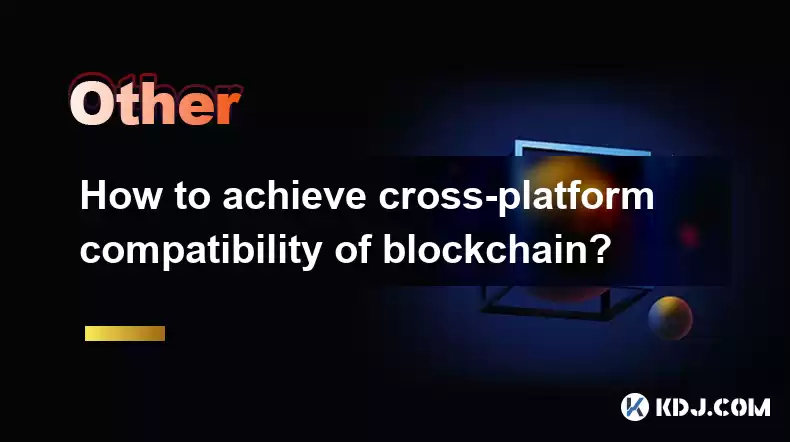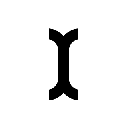-
 Bitcoin
Bitcoin $114000
0.76% -
 Ethereum
Ethereum $3488
0.53% -
 XRP
XRP $2.908
2.27% -
 Tether USDt
Tether USDt $1.000
0.05% -
 BNB
BNB $750.3
0.39% -
 Solana
Solana $161.9
0.14% -
 USDC
USDC $1.000
0.03% -
 TRON
TRON $0.3258
1.22% -
 Dogecoin
Dogecoin $0.1991
1.38% -
 Cardano
Cardano $0.7260
3.39% -
 Hyperliquid
Hyperliquid $38.20
2.33% -
 Stellar
Stellar $0.3987
7.33% -
 Sui
Sui $3.414
1.17% -
 Chainlink
Chainlink $16.28
2.52% -
 Bitcoin Cash
Bitcoin Cash $542.2
2.07% -
 Hedera
Hedera $0.2489
7.51% -
 Ethena USDe
Ethena USDe $1.001
0.05% -
 Avalanche
Avalanche $21.40
0.70% -
 Toncoin
Toncoin $3.635
0.75% -
 Litecoin
Litecoin $109.8
2.04% -
 UNUS SED LEO
UNUS SED LEO $8.955
-0.02% -
 Shiba Inu
Shiba Inu $0.00001221
2.44% -
 Uniswap
Uniswap $9.152
2.20% -
 Polkadot
Polkadot $3.588
2.09% -
 Monero
Monero $298.1
1.27% -
 Dai
Dai $1.000
0.01% -
 Bitget Token
Bitget Token $4.326
1.28% -
 Pepe
Pepe $0.00001045
1.96% -
 Cronos
Cronos $0.1330
4.27% -
 Aave
Aave $257.9
2.12%
How to achieve cross-platform compatibility of blockchain?
Cross-platform compatibility in blockchain enhances interoperability and accessibility, allowing seamless interaction across different networks using technologies like Interledger and atomic swaps.
Apr 15, 2025 at 09:21 am

The concept of cross-platform compatibility in the realm of blockchain technology is crucial for enhancing interoperability and accessibility across various blockchain networks. Cross-platform compatibility refers to the ability of different blockchain systems to communicate and interact seamlessly with one another, regardless of the underlying technology they are built upon. This article will delve into the methods and technologies that facilitate this compatibility, focusing on practical steps and technical considerations.
Understanding Blockchain Platforms
Before delving into the specifics of achieving cross-platform compatibility, it is important to understand what constitutes a blockchain platform. Blockchain platforms are the foundational software frameworks that enable the creation and operation of decentralized applications (dApps) and smart contracts. Examples include Ethereum, Hyperledger Fabric, and Binance Smart Chain, each with its own architecture, consensus mechanisms, and programming languages.
The Need for Cross-Platform Compatibility
The necessity for cross-platform compatibility arises from the fragmented nature of the blockchain ecosystem. With numerous blockchain networks in existence, each with unique features and capabilities, the ability to transfer data and assets across these platforms is essential for realizing the full potential of blockchain technology. This compatibility enhances efficiency, reduces costs, and fosters innovation by allowing developers and users to leverage the strengths of multiple blockchain systems.
Technologies Enabling Cross-Platform Compatibility
Several technologies and protocols have been developed to address the challenge of cross-platform compatibility in blockchain. These include:
Interoperability Protocols: Protocols like Interledger and Cosmos enable different blockchains to communicate and transfer value. Interledger, for example, facilitates payments across different ledgers, while Cosmos uses the Inter-Blockchain Communication (IBC) protocol to allow sovereign blockchains to exchange data and tokens.
Sidechains and Relays: Sidechains are separate blockchains that are pegged to a main blockchain, allowing assets to be transferred between them. Relays, on the other hand, are systems that transmit data between blockchains. Both technologies play a crucial role in achieving cross-platform compatibility by enabling the movement of assets and information across different networks.
Cross-Chain Atomic Swaps: This technology allows the exchange of cryptocurrencies between different blockchains without the need for a trusted third party. Atomic swaps ensure that the transaction either completes entirely or not at all, providing a secure method for cross-platform asset transfers.
Implementing Cross-Platform Compatibility
To implement cross-platform compatibility, developers and organizations can follow these steps:
Choose the Right Interoperability Solution: Depending on the specific needs of the project, select an appropriate interoperability protocol or technology. For instance, if the goal is to enable cross-chain token swaps, atomic swaps might be the best choice. If the focus is on data exchange, a protocol like IBC could be more suitable.
Integrate the Chosen Technology: Once the interoperability solution is selected, integrate it into the existing blockchain infrastructure. This may involve modifying the blockchain's codebase to support the new protocol or technology. For example, to implement Interledger, developers would need to add support for the Interledger protocol within their blockchain's transaction processing system.
Test the Integration: Thoroughly test the integration to ensure that it functions as expected. This involves setting up test environments where different blockchain networks can interact and verifying that data and assets can be transferred successfully. Testing should cover various scenarios, including high-volume transactions and edge cases.
Deploy and Monitor: After successful testing, deploy the integrated solution to the mainnet. Continuous monitoring is essential to identify and address any issues that may arise post-deployment. Monitoring tools can help track the performance and reliability of the cross-platform interactions.
Challenges and Considerations
Achieving cross-platform compatibility is not without its challenges. Security is a primary concern, as interoperability introduces new attack vectors that could compromise the integrity of the connected blockchains. Ensuring that the interoperability solutions are secure and robust is crucial. Additionally, scalability can be an issue, as the added complexity of cross-platform interactions may impact the performance of the blockchain networks involved.
Case Studies of Cross-Platform Compatibility
Several projects have successfully implemented cross-platform compatibility, providing valuable insights into the practical application of these technologies. Polkadot, for example, is a multi-chain framework that enables different blockchains to interoperate through its relay chain and parachains. Wanchain is another project that focuses on cross-chain interoperability, allowing the transfer of assets across different blockchains using its decentralized cross-chain infrastructure.
Frequently Asked Questions
Q: How does cross-platform compatibility affect the security of blockchain networks?
A: Cross-platform compatibility can introduce new security risks, as it expands the attack surface of the connected blockchains. However, with proper implementation and robust security measures, these risks can be mitigated. It is essential to use secure interoperability protocols and conduct thorough security audits to ensure the safety of cross-platform interactions.
Q: Can cross-platform compatibility be achieved without compromising the decentralization of blockchain networks?
A: Yes, cross-platform compatibility can be achieved while maintaining the decentralization of blockchain networks. Technologies like atomic swaps and interoperability protocols are designed to work in a decentralized manner, ensuring that no single entity controls the cross-chain interactions.
Q: What are the main benefits of achieving cross-platform compatibility in blockchain?
A: The main benefits include increased interoperability, enhanced efficiency, reduced costs, and the ability to leverage the strengths of multiple blockchain networks. Cross-platform compatibility allows for seamless data and asset transfers, fostering a more interconnected and efficient blockchain ecosystem.
Q: Are there any regulatory considerations when implementing cross-platform compatibility?
A: Yes, regulatory considerations can impact the implementation of cross-platform compatibility. Different jurisdictions may have varying regulations regarding blockchain and cryptocurrency transactions, which could affect the legality and feasibility of cross-chain operations. It is important to ensure compliance with relevant regulations when deploying interoperability solutions.
Disclaimer:info@kdj.com
The information provided is not trading advice. kdj.com does not assume any responsibility for any investments made based on the information provided in this article. Cryptocurrencies are highly volatile and it is highly recommended that you invest with caution after thorough research!
If you believe that the content used on this website infringes your copyright, please contact us immediately (info@kdj.com) and we will delete it promptly.
- XRP: Crypto Analyst's Smartest Buy in 2025?
- 2025-08-04 00:30:13
- SEC, Crypto Regulation, and Digital Assets: A New Era?
- 2025-08-04 00:30:13
- Navigating the Meme Coin Mania: Cold Wallets, SHIB, and DOGE in 2025
- 2025-08-03 22:30:16
- Bitcoin's Price Fall and Scrutiny: What's a New Yorker to Think?
- 2025-08-03 22:30:16
- Shiba Inu's Resistance and Recovery Push: What's Next for SHIB?
- 2025-08-03 22:50:16
- Bitcoin, Hashcash, and Crypto Innovation: A Look at the Foundation and Future
- 2025-08-03 23:12:53
Related knowledge

What is the difference between on-chain and off-chain transactions?
Aug 02,2025 at 04:22pm
Understanding On-Chain TransactionsOn-chain transactions refer to digital asset transfers that are recorded directly on a blockchain ledger. These tra...

What is a node's role in a blockchain network?
Aug 03,2025 at 03:16pm
Understanding the Function of a Node in a Blockchain NetworkA node is a fundamental component of any blockchain network, acting as a participant that ...

How are transactions verified on a blockchain?
Aug 04,2025 at 12:35am
Understanding the Role of Nodes in Transaction VerificationIn a blockchain network, nodes are fundamental components responsible for maintaining the i...

What is the double-spending problem and how does blockchain prevent it?
Aug 02,2025 at 01:07pm
Understanding the Double-Spending ProblemThe double-spending problem is a fundamental challenge in digital currency systems where the same digital tok...

What is the difference between a blockchain and a database?
Aug 01,2025 at 09:36pm
Understanding the Core Structure of a BlockchainA blockchain is a decentralized digital ledger that records data in a series of immutable blocks linke...

How does DeFi use blockchain?
Aug 03,2025 at 11:15pm
Understanding the Role of Blockchain in DeFiDecentralized Finance (DeFi) relies fundamentally on blockchain technology to operate without intermediari...

What is the difference between on-chain and off-chain transactions?
Aug 02,2025 at 04:22pm
Understanding On-Chain TransactionsOn-chain transactions refer to digital asset transfers that are recorded directly on a blockchain ledger. These tra...

What is a node's role in a blockchain network?
Aug 03,2025 at 03:16pm
Understanding the Function of a Node in a Blockchain NetworkA node is a fundamental component of any blockchain network, acting as a participant that ...

How are transactions verified on a blockchain?
Aug 04,2025 at 12:35am
Understanding the Role of Nodes in Transaction VerificationIn a blockchain network, nodes are fundamental components responsible for maintaining the i...

What is the double-spending problem and how does blockchain prevent it?
Aug 02,2025 at 01:07pm
Understanding the Double-Spending ProblemThe double-spending problem is a fundamental challenge in digital currency systems where the same digital tok...

What is the difference between a blockchain and a database?
Aug 01,2025 at 09:36pm
Understanding the Core Structure of a BlockchainA blockchain is a decentralized digital ledger that records data in a series of immutable blocks linke...

How does DeFi use blockchain?
Aug 03,2025 at 11:15pm
Understanding the Role of Blockchain in DeFiDecentralized Finance (DeFi) relies fundamentally on blockchain technology to operate without intermediari...
See all articles

























































































